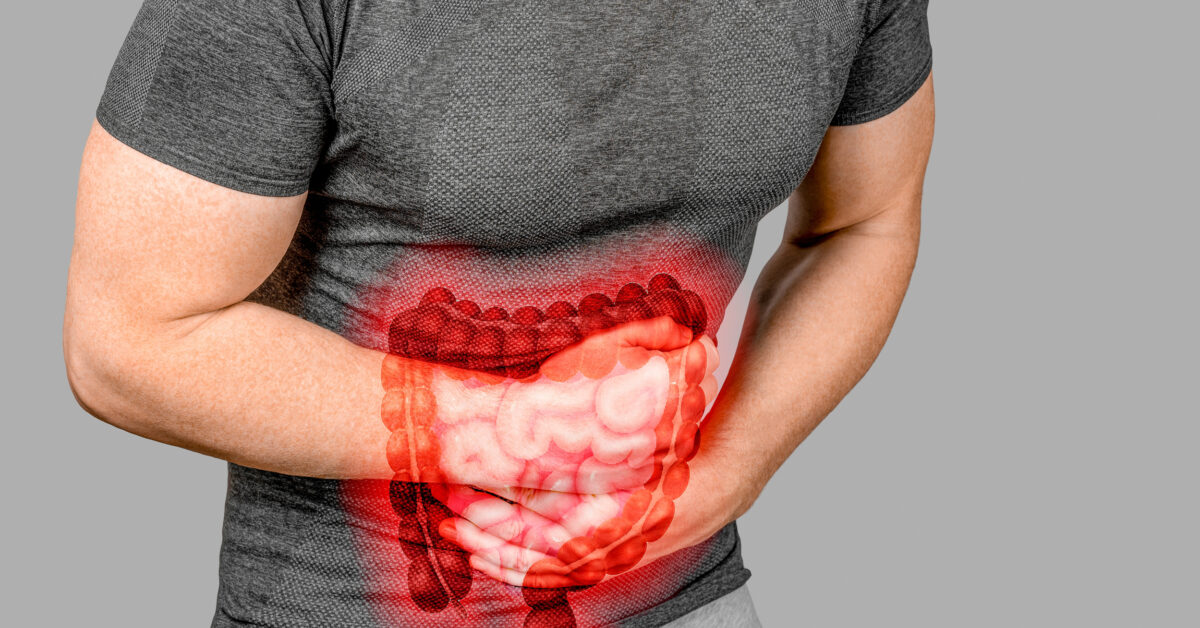
Stop Gaslighting Me! (Part 1)
June 2022
First Person with Ben Terry: Battling the Storms of a Cancer Diagnosis
June 2022Men’s Health
According to Harvard Health Publishing, the average man pays less attention to his health than the average woman. Compared to women, men are more likely to …
- drink alcohol and use tobacco
- make risky choices
- not see a doctor for regular checkups
Men are assailed by the diseases that can affect anyone—heart disease, stroke, diabetes, cancer, depression . . . but they also have unique issues such as prostate cancer and benign prostate enlargement.
Many of the major health risks that men face can be prevented with a healthy lifestyle: regular exercise, a healthy diet, not smoking, stress reduction, and alcohol consumption in the moderate range (no more than two drinks a day) if at all. Regular checkups and screening tests can spot disease early when it is easiest to treat.
So don’t be an average man — get on board with protecting your health today.
www.health.harvard.edu/topics/mens-health
Keeping an Eye on Prostate Cancer: What to know about active surveillance
Every year more than 190,000 men in the U.S. are diagnosed with prostate cancer. For those whose disease is caught early, that diagnosis may come with a decision: Should the disease be treated right now, or is it safe to monitor it and treat it only if it starts to grow?
The latter approach is called active surveillance—or “watchful waiting.” Prostate cancer often grows slowly, so immediate treatment may not always be necessary. “By choosing the active surveillance route many men are able to avoid the side effects that come from other treatments. This approach is very safe for men with low-risk prostate cancer,” Dr. John Upshaw, a board-certified urologist and member of the medical staff at Lake Charles Memorial Health System.
If you have intermediate- or high-risk prostate cancer, surveillance may not be the best option, especially if you are healthy or have a higher risk tumor. In these cases, it may be better to seek treatment to slow disease progression.
What’s involved?
Men who choose active surveillance typically see their doctor about every six months for prostate-specific antigen (PSA) tests, and every 12 months for digital rectal exams and prostate biopsies. These tests are used to monitor the cancer. Treatment – such as radiation or surgery – begins only if the cancer changes or starts to grow. One potential benefit of active surveillance is that it can help a man avoid or delay potential side effects of treatment, including sexual difficulties and incontinence. It’s important to understand there is a risk that the cancer could grow in between tests. Also, the prostate biopsies that are part of this approach can be uncomfortable.
Who might be a candidate?
According to experts, men who choose this option usually have a good prognosis. But it isn’t for everyone. Active surveillance is more likely a possibility for men with small, slow-growing tumors. Many of these men are also older.
A pathology report can help determine if a man is a candidate for active surveillance based on specific details about his prostate tumor. Doctors also look at other factors, including the cancer’s stage and the man’s personal and family health history. Of course, preference is also part of the choice – some men may not feel comfortable delaying treatment.
The bottom line: Men who think they may want to try active surveillance for prostate cancer should discuss the pros and cons of the plan with their doctor.
To make an appointment with Dr. John Upshaw, contact his office at 337-494-4656.
Taking Care of the Ticker: Healthy Lifestyle and Innovative Cardiovascular Technology Decrease the Risk of Heart Disease
Most 21st century men in the United States know the basic principles of a heart-healthy lifestyle, such as eliminating smoking, regular exercise, treating high blood pressure aggressively, controlling diabetes, and keeping off excess weight. Adhering to these basics may sound simple, but experience teaches us that it can be challenging.
The importance for men to lead a heart-healthy lifestyle cannot be overstated. “With more access to information and modern resources, many men have made essential lifestyle changes,” says Dr. Michael Turner of Imperial Health-Cardiovascular Specialists. “Despite taking these critical steps, some remain at a much higher risk of developing heart disease due to genetics.” An inherited genetic defect in the cholesterol metabolism, and other mutations, may result in a markedly increased risk of early heart attacks. Identifying men with these risks is vitally important.
Lifestyle Factors
Diabetes, if not diet controlled, may require professional help from either a family physician or an endocrinologist. Keeping the hemoglobin A1C low improves clinical outcomes.
The best way for men to stop smoking is never to start. But once a person is addicted to tobacco, professional help with smoking cessation clinics, therapy, and medications can be effective.
High blood pressure often responds to weight reduction and salt restriction. If it remains elevated, your family physician can assist with medical management. Aerobic exercise for at least 20 minutes five days a week is recommended. This can be as simple as walking or using training devices. Water aerobics is a good alternative for men with orthopedic issues, or those considerably overweight. Ideally, men should maintain a recommended BMI (body mass index) of around 25. Diet and exercise are the mainstays for weight reduction, with medications and surgery as a last resort.
“A proper diet in America can be complicated, given the availability of fast food and a nationwide tendency to overeat,” says Dr. Turner. “The best general recommendation I can offer is to follow a Mediterranean-style diet.” This diet stresses decreased red meat consumption, increased fatty fish intake paired with vegetables, fruits, and nuts. In addition to decreasing the risk of heart disease, the Mediterranean-style diet decreases the risk of heart diseases, promotes longevity, and is associated with a reduced risk of certain cancers.
Technological Advances
Dr. Turner is encouraged by cardiac CT technology. “Preventive strategy is rapidly developing around cardiac CT technology. Men age 40 or above with no symptoms (such as chest pain) but with one or more risk factors (especially family history) may benefit from having a simple CT scan called a calcium scan.” This simple test provides a quantitative calcium score in the coronary arteries, which has proven to be the single best predictor of the likelihood of having a heart attack over the next five to 10 years. “Knowing likely risks allows your medical professional to guide preventive treatment, decreasing your long-term risk of a heart attack or stroke,” Dr. Turner says.
Chest pain is a well-known indicator that a dangerous cardiac event is on the horizon. Dr. Turner strongly emphasizes the need for early evaluation. “In individuals with chest pain, it is clear that the best first-line test for evaluation is a cardiac CT angiogram,” says Turner. “This scan assesses plaque in the coronary arteries and can exclude heart disease with almost 100% reliability. It also assesses short and long-term risks in individuals with plaque in their coronary arteries allowing customized treatment.” A new development called fractional flow reserve–CT further enables the identification of high-risk plaques noted on the cardiac CT scan.
Deaths from heart attacks have declined almost 50% over the last 50 years due to risk factor reduction and the development of exciting medical and surgical interventions, but there is always ground to be gained. Dr. Turner remains passionate and optimistic. “By implementing heart-healthy lifestyle changes, identifying high-risk individuals, and utilizing customized preventive-and-treatment programs, we increase the odds of eliminating heart disease as a major factor in our lives.”
Men’s Fitness: Age is Just a Number
by Katelynn Mouton
Hormonal changes throughout life are a big topic of conversation for women, but men are not immune to these changes. And when it comes to fitness and nutrition, not all plans are the same. Failing to take into account age, hormone levels and personal goals can be the difference between fitness feats and fitness frustrations.
20s: For men in their 20s, testosterone levels are at an all-time high. The body is primed for sports and large muscle growth. This is the perfect decade to hit the weight room, build muscles, and establish a strong healthy foundation.
30s: Leaving your 20s behind can be jarring on several levels, but as men age, especially around age 35, research suggests a one to three percent decline per year in circulating testosterone concentration.
According to Maximum Kinetics Sports Performance General Manager Liz Kapelan, MPH, this is significant because low testosterone can affect a variety of factors in short- and long-term health, including muscle mass, energy, mood, diet choices, mental health and more.
This decade is all about shifting focus from building big muscles to boosting your metabolism and avoiding or getting rid of the fat that’s starting to become stubborn. The focus here should be conditioning and maintaining fitness.
In general, Kapelan recommends emphasizing a strength-based workout plan two to three times a week.
“This should be coupled with a variety of aerobic and anaerobic training as well,” says Kapelan. “High Intensity Interval Training (H.I.I.T) is a form of anaerobic training that has been shown to raise testosterone levels. Studies suggest resting for one to two minutes between intervals is beneficial.”
40s: In your 40s, the fast twitch fibers needed to build big muscles begin to decline; however, slow-twitch fibers, the ones most associated with endurance training, are less affected.
For this age group, the mind-muscle connection is paramount. Controlled reps and movement patterns are key. Look for bodyweight exercises such as push-ups, planks and lunges. These movements work numerous muscle groups and are hard to beat.
Kapelan points out that chronic endurance exercise—such as cycling or running for hours—has been shown to decrease testosterone. “High endurance athletes tend to have higher levels of cortisol, which has the opposite effect of testosterone. The more endurance exercise you do, the more likely you are to break down muscle tissue.”
Should you rule out endurance training all together though? “Moderation is key,” Kapelan says. “Endurance training is not necessarily bad for you, but cortisol can have an impact on your muscle mass, sleep and mood. Moderate cardiovascular exercise, 30 minutes, five days a week, will protect your heart and will not trigger excess cortisol production.”
50+: What about men 50 and older? It’s important to take overall health and well-being into account. Look for a routine that includes cardio, resistance training, balance exercises and stretching. Change it up frequently by adding challenge and variety.
A full-body workout two to three times a week is an effective way to slow down the aging process and maintain muscle mass. Include exercises that work major muscle groups like the legs, glutes, chest, back, shoulders, arms and core muscles.
As far as timing of workouts for all ages, Kapelan says research shows a boost in testosterone levels when performing strength-training workouts in the evening versus early morning hours.
No matter your age, nutrition is key. “Not fueling our bodies properly means less recovery and an increased risk for injury and sickness,” Kapelan says. “As we age, our bodies go through natural physiological adaptations meaning our diets must evolve as well. What we eat not only fuels our workouts, but also influences our mood, energy levels and immune and digestive health.”
Protein, carbohydrates and fats are the key macronutrients to focus on. “Protein plays an important role because it helps repair and strengthen muscle tissue,” Kapelan explains. “Our bodies cannot store protein like it can store carbohydrates and fat so it is important that we get enough protein from food.” She adds as a caution that more than 20-25 grams per serving can induce bloating, gas and discomfort.
Carbohydrates are often given a bad rap, but Kapelen says carbohydrates, even more than protein, create muscle. “Eat a colorful variety of vegetables and other complex carbohydrates like quinoa and oats, to introduce a diverse blend of vitamins and minerals to your body.”
Finally, fats are essential for proper body function. “Essential fatty acids help with muscle recovery, joint and tendon health,” Kapelan says. “They also help with brain and nerve function and are needed for the absorption of essential vitamins and the manufacturing of hormones.” Deep water fish, like salmon and tuna, and plant-based fats such as avocado, olives, nuts and seeds are smart choices.
Medicis: Launches SWLA’s First Medical Marijuana Home Delivery Service
Free Home Deliveries Available to Patients in the city of Lake Charles & Calcasieu, Beauregard, Jefferson Davis, Allen & Cameron Parishes
Medicis Pharmacy, one of only nine approved pharmacies in the State of Louisiana to sell medical marijuana, now offers a home delivery service to patients throughout the Southwest region, which includes the City of Lake Charles, Calcasieu, Beauregard, Jefferson Davis, Allen, Cameron parishes. “We’re excited to make history by launching Southwest Louisiana’s first-ever legal medical marijuana home delivery service. Medicis is deeply committed to improving patient access and delivering medication to patients in each and every zip code throughout Southwest Louisiana”, said John Condos, CEO of Medicis. “Our new home delivery service is designed to not only serve those patients who are home-bound or have trouble visiting our Lake Charles pharmacy but also those who will appreciate its convenience.”
“The medical marijuana home delivery service was designed by a team of e-commerce experts and pharmacists to serve patients with debilitating diseases, like chronic pain, cancer and ALS,” said James Thibodeaux, PharmD, Medicis Pharmacy Manager. “This new service will offer Medicis patients the same home delivery convenience provided by Amazon and major pharmacy chains.”
All deliveries will be handled exclusively by Medicis employees in company-owned delivery vehicles outfitted with cutting-edge safety features, including GPS tracking devices. For a limited time only, this service will be offered free of charge to patients.
About Medicis Pharmacy: Medicis Pharmacy is one of only nine approved pharmacies in the State of Louisiana to sell medical marijuana. The Medicis Pharmacy team serves patients suffering from chronic pain, cancer, ALS and other debilitating medical conditions through its Medical Marijuana Pharmacy located in Lake Charles, Louisiana. For more information or to learn how to become a medical marijuana patient, visit https://medicispharmacy.com/.






